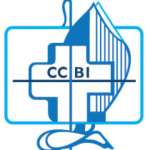By Dr. George Jacob
Kochi: She was an 18-year old Chartered Accountancy student from Piravom, a suburb of Kochi, a wannabe metropolis, fast becoming the crime capital of India, replacing New Delhi.
She used to attend coaching classes for CA in an institute at Palarivattom, in the heart of Kochi. She stayed at a hostel in Kacheripady, also in the heart of the city. A person who used to visit home every weekend, she decided to break that habit to remain in her hostel to prepare for her exams one weekend.
On March 5, she telephoned her parents at 3 pm to inform them that she would be visiting them to collect her books. Later that afternoon, she visited a church at Kaloor, also right inside the city. That was the last the world saw of her. She was missing since.
A CCTV footage from a bakery near the church showed her enter the church at 5:37 pm, to leave it at 6.01 pm. She was seen not to proceed to the bus stand. Two motorcycle-borne men were seen to follow her after she exited from the church. The worried parents registered a person missing case with the local police station.
On March 9, a dead body was fished out from the Kochi backwaters near Ernakulam Wharf at 8:45 pm. The body was that of the missing teenager. A stunned Kerala lost yet another daughter. The parents believed she was murdered
All hell broke loose in her hometown. Politicians vied with each other to ‘express their shock and grief’ at the untimely death of a bright young girl next-door. A hartal (shut down) was called for in Piravam, as if that would resurrect the dead girl back to life! Politicians and ‘concerned public men’ left no stone unturned to express their anger and grief, caring two hoots for the sensitivity of a grieving family. Who cared for them anyway?
A vernacular newspaper carried the picture of the teenager’s wailing mother on its front pages, as if it needed a picture like that to inform the world that the mother was indeed grief-stricken (so much so for journalistic etiquette). In the mean time, the police arrested a 26-year-old youth working in Chhattisgarh in connection with the girl’s death.
‘Investigations’ revealed that the two had known each other for two years and that their relationship ended last April. The man confessed to have called her even after April. The frequency of his calls and messages had increased days before she died. The police said “he has stalked and pestered her so much that he made six calls and sent around 55 text messages to her, a day before she died.”
This is not the first time a woman has been harmed in Kerala, wrongly called ‘God’s own country’, appropriately to be called ‘God’s disowned country’, and also in Kochi, also wrongly called ‘queen of the Arabian Sea’. No queen worth her salt would want her women subjects to be hurt, and their modesty violated the way it is being done these days.
On February 20, a leading South Indian actress was abducted and assaulted in her car, and her nudity photographed in the wee hours on National Highway 47, as she returned home from work. The main accused is in police custody. Was he the only person behind the assault, or was he a hatchet man hired by or working for someone else? Will the truth be ever known?
On April 28, a 29-year old law student was found murdered in her home in Perumbavoor, a suburb of Kochi. The police arrested a 24-year-old Assamese laborer, who admitted to murdering her. The local population is reluctant to believe he is the actual culprit.
On February 1, 2011, a 23-year old woman travelling in a passenger train from Ernakulam to Shornur was assaulted by a one-armed vagabond. She was thrown out of the bogie in the melee. The assailant, jumping after her raped her to death beside the railroad. The one-armed assailant, a native of Cuddalore in Tamil Nadu was found guilty. He was later awarded death sentence by the trial court, which was upheld by the Kerala High Court. However, the Supreme Court in its order on September 15, 2016, acquitted him for reasons best known to the court and commuted his sentence to life term. Some justice that!
These isolated incidents are just the tip of a nasty iceberg that constitutes a menace and a social problem in this state that boasts of near cent percent education and excellent health indices.
The crime against women recorded an all time high in Kerala in 2016 with over 14,000 cases registered at various police stations with Thiruvananthapuram, the capital city(1,644 cases) topping the list followed by Ernakulam(1,419), and Malapuram(1,406).
While Thiruvananthapuram district recorded the maximum number of rape (204), Ernakulam recorded a total of 91 kidnapping cases, the highest.
The year 2016 recorded a total number of 24,061 cases of atrocities against women as against 2,384 the previous year and 549 in 2008.
2016 recorded a total number of atrocities against women as against 12,383 the previous year.
The year also saw crime against children registering a sharp increase-2,899, as against 2,384 last year and 549 in 2008.
A total number of 707,541 cases were registered across the state in 2016, as against 654,003, the previous year. Despite stringent ‘laws’ and awareness campaigns, as many as 910 cases of rape were reported in Kerala in the first six months of 2016.
According to the state’s police statistics, a total number of 7,909 cases were registered across the state in 2016 as against 654,008 the previous year. As many as 299 murders, 242 abduction cases and 620 murder attempts too were registered in 2016.
What ails the state as regards attacks against women? One reason for these numbers which seem to burst at the seams might be more willingness on the part of the victims to report such cases, as against yesteryears, when the tendency was to hush things up under the carpet for fear of social ostracization of the victims and their families.
Another reason could be the ‘awareness’ among the anti-socials that they can get away with anything, the law being too lenient toward such elements, the one-armed rapist being an example.
If at all they’re confined to custody, they are assured of a life much comfortable than in their homes, with choicest food, and comforts of AC, mobile phones and TV to enhance their quality of life, financed by taxes paid by the very people they sought to victimize variously.
How can this menace be countered? The women in the state have every right to lead a life of dignity far moved from fear, threat, blackmail, and physical hurt.
There have even been suggestions to consider legal castration or emasculation to control the crime of molesting women, brought about by the testosterone surge that seems to wreak havoc to civility within Kerala’s society.
Jestingly, a suggestion to sprinkle testosterone blocking drugs (drugs that block specific sites in the human body to which testosterone attach to, through which it acts) all over Kerala using choppers, akin to spraying pesticides over farms!
Will licensed arming of women help? Or will that be counterproductive, with the arms being used against them? Should women be trained in the use of arms for self-defense? Women are already enrolling in various forms of marshal arts classes in droves to defend themselves in times of attack. The police is traditionally known for foot-dragging and their lackadaisical attitude to such cases, especially when the so-called ‘VIPs’ are involved directly or indirectly in individual cases.
The only cocksure way out is to enforce stringent punitive methods such crimes merit, as that would go a long way to serve as deterrent.
Legal emasculation must be considered in all seriousness, as crude crimes merit crude methods of punishment in the interest of sanity within society.









